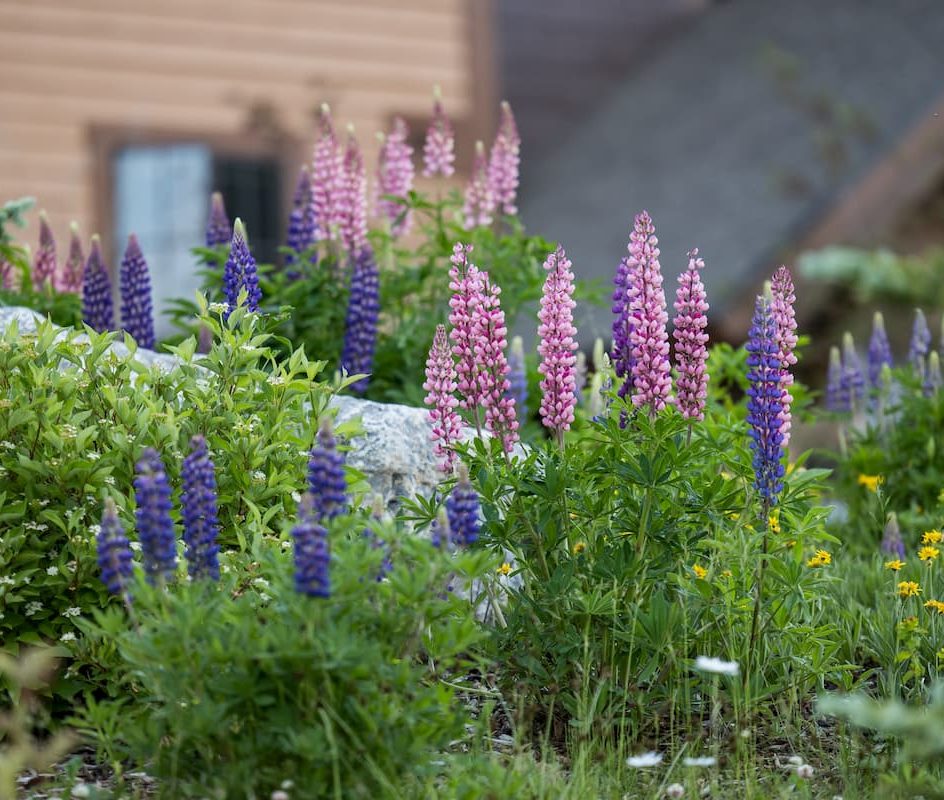
- High Country Conservation
- May 20, 2024
- Ask Eartha
Dear Eartha, I read about new watering schedules in the community, and I’m confused. Is this meant for lawns only? What about vegetable gardens?
As you suggest, not all plants are created equally. And while the new watering schedules reflect the maximum number of days to run sprinklers on your grass lawn (three days per week), many types of plants simply don’t need that much water. In fact, too much water can bring on disease or even kill plants (and grass) entirely! Rest assured, the new schedules allow more than enough time to grow a healthy, beautiful – and in the case of your vegetables, delicious – landscape.
General Tips
No matter the type of plant or the style of irrigation stay on schedule and avoid watering between the hours of 9:00 am and 6:00 pm. As Denver Urban Gardens notes, “Mid-day watering is a poor use of gardening time and an extremely inefficient way of watering into thirsty soils.”
Before you even plant, and every year after, amend the soil with compost. It’s not a fertilizer but instead improves the soil’s structure. So for example, water may not fully absorb into the clay-like soil abundant in Summit County. But when that clay-like soil is mixed with compost, the water moves through the soil rather than running off. Good soil structure also allows air and nutrients to reach your plants’ roots.
Watering Trees
According to the Qualified Water Efficient Landscaper, or QWEL, training, watering every two months for established trees is sufficient during Summit County summers. Prolonged periods of hot, dry and windy weather may require monthly watering. Keep in mind that newly planted and young trees require additional water to get established and in fact, new landscapes are exempted from the watering schedules the first two years after planting.
So, how do you know if you’re on track? Keep an eye on your space! For trees, Colorado State University (CSU) Extension recommends checking soil moisture with a shovel to a depth of eight to 10 inches.
“The soil should not be crumbly or dry. If the soil feels wet or forms and holds a ball when squeezed in the hand, the soil does not need to be irrigated. Trees do best when there is time for the soil to drain and dry slightly between irrigations.”
Watering Shrubs & Perennials
The QWEL program suggests weekly watering as a general guidance for shrubs and perennials in our climate; however, that frequency may need to change based on sun and wind exposure at the site, and midsummer versus fall conditions. When it comes to perennials, CSU Extension notes that “drooping leaves or stems and blossom drop are signs that irrigation needs to be increased.”
Watering Vegetables
Provided you are hand watering or using a drip system, the new schedules do not restrict the number of days you can water vegetables. Yet, there’s a few important things to keep in mind to ensure that your veggies thrive, and your water bill stays in check.
If you’re planting seeds right into the dirt (which is recommended for many veggies such as the snap peas and carrots that love our cool climate), keep the soil moist. I checked in with Summit CSA Farmer Kyla Laplante and she suggested getting your hands dirty – literally! As you’re waiting for the seeds to sprout, stick your finger into the soil and apply water so that moisture reaches to the depth of your first or second knuckle. This can require twice daily watering. Once the plants sprout, you can water less as long as you keep the soil moist.
Overall, Kyla suggests checking in on your veggie garden morning and night to familiarize with the nuances of your growing space, and to ensure that water is reaching the plants’ roots. (Hint: little plants with little roots don’t need as much water as big plants with deep roots.) See more watering tips from Denver Urban Gardens or visit High Country Conservation Center’s YouTube page to learn the basics of high altitude veggie gardening.
Watering Grass Lawns
When it comes to grass lawns, watering deeply two to three days each week (depending on whether it’s early, mid or late summer) will train your grass to be more drought-tolerant. How does that work? With the “cycle and soak” watering method.
When sprinklers run for a long time, the soil can’t absorb all the water. It runs off onto streets, or even pools in the yard. Cycling splits an irrigation system’s total runtime into multiple cycles, which helps all that precious water soak deeper underground. The result? Roots that run deep and healthy grass that better absorbs air and nutrients.
For some, keeping a garden is a great way to connect with nature and spend time outside. Others prefer a little more help. If you’d like to turn to a professional, check out the list of local landscapers certified in efficient irrigation.
Ask Eartha Steward is written by the staff at the High Country Conservation Center, a nonprofit dedicated to waste reduction and resource conservation. Submit questions to Eartha at info@highcountryconservation.org.
